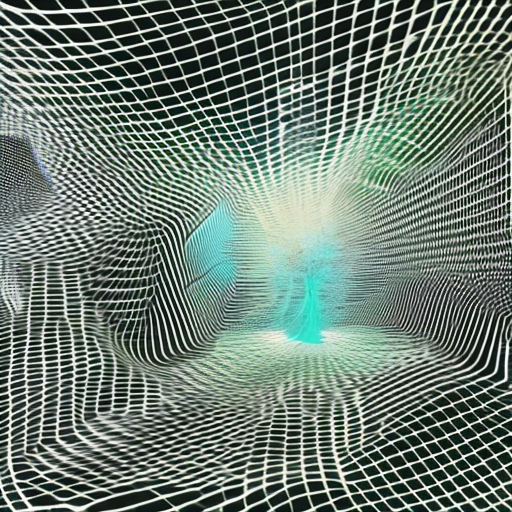Summary:
Net art refers to a form of art that is created and distributed using the internet as its primary medium. It emerged in the 1990s as artists began to explore the possibilities of the internet as a platform for artistic expression. Net art encompasses a wide range of practices, including interactive installations, online performances, digital collages, and virtual reality experiences. It challenges traditional notions of art by blurring the boundaries between the physical and digital realms, and by questioning the role of the artist, the artwork, and the audience in the digital age.
The Emergence of Net Art:
Net art emerged in the 1990s as artists began to experiment with the internet as a medium for artistic expression. The widespread availability of personal computers and the increasing accessibility of the internet provided artists with new tools and platforms to create and distribute their work. Artists started to explore the unique characteristics of the internet, such as its interactivity, connectivity, and ability to reach a global audience. They began to create artworks that could only exist online, using the internet as both a canvas and a gallery space.
Characteristics of Net Art:
Net art is characterized by its use of digital technologies, interactivity, and networked communication. It often incorporates elements such as hypertext, hyperlinks, animated graphics, sound, and video. Net artists often engage with the internet’s infrastructure and aesthetics, using HTML, CSS, and other web technologies as artistic tools. They also explore the social and cultural implications of the internet, addressing issues such as privacy, surveillance, identity, and the democratization of information.
Types of Net Art:
Net art encompasses a wide range of practices and forms. Some net artists create interactive installations that invite the audience to actively participate in the artwork. These installations often blur the boundaries between the physical and digital realms, creating immersive and engaging experiences. Other net artists create online performances, using live streaming, chat rooms, and social media platforms to engage with the audience in real-time. Some net artists create digital collages, combining images, text, and sound to create multimedia artworks. Virtual reality experiences are also a growing area of net art, allowing viewers to immerse themselves in virtual worlds and interact with the artwork in new and innovative ways.
Challenges and Critiques:
Net art presents unique challenges and raises important questions about the nature of art in the digital age. One of the main challenges is the ephemeral nature of net art. Unlike traditional artworks, which can be physically preserved and displayed in museums, net art exists primarily in the digital realm and is subject to the rapid pace of technological change. This raises questions about the preservation and documentation of net art, as well as the ownership and authenticity of digital artworks.
Critiques of net art often center around issues of accessibility and elitism. While the internet has the potential to democratize art by making it accessible to a global audience, not everyone has equal access to the internet or the necessary technological resources. This raises concerns about who gets to participate in and benefit from net art. Additionally, some critics argue that net art can be overly focused on the medium itself, at the expense of artistic content and meaning.
The Future of Net Art:
As technology continues to evolve, so does net art. Artists are constantly pushing the boundaries of what is possible with digital technologies, exploring new forms of interactivity, virtual reality, and artificial intelligence. The increasing integration of the internet into our daily lives also presents new opportunities for net art to engage with social and political issues, and to challenge established power structures.
In conclusion, net art is a dynamic and evolving form of artistic expression that utilizes the internet as its primary medium. It challenges traditional notions of art and explores the unique characteristics of the internet, such as interactivity, connectivity, and global reach. Net art encompasses a wide range of practices and forms, and raises important questions about the nature of art in the digital age. As technology continues to advance, net art will continue to evolve and shape the future of artistic expression.












